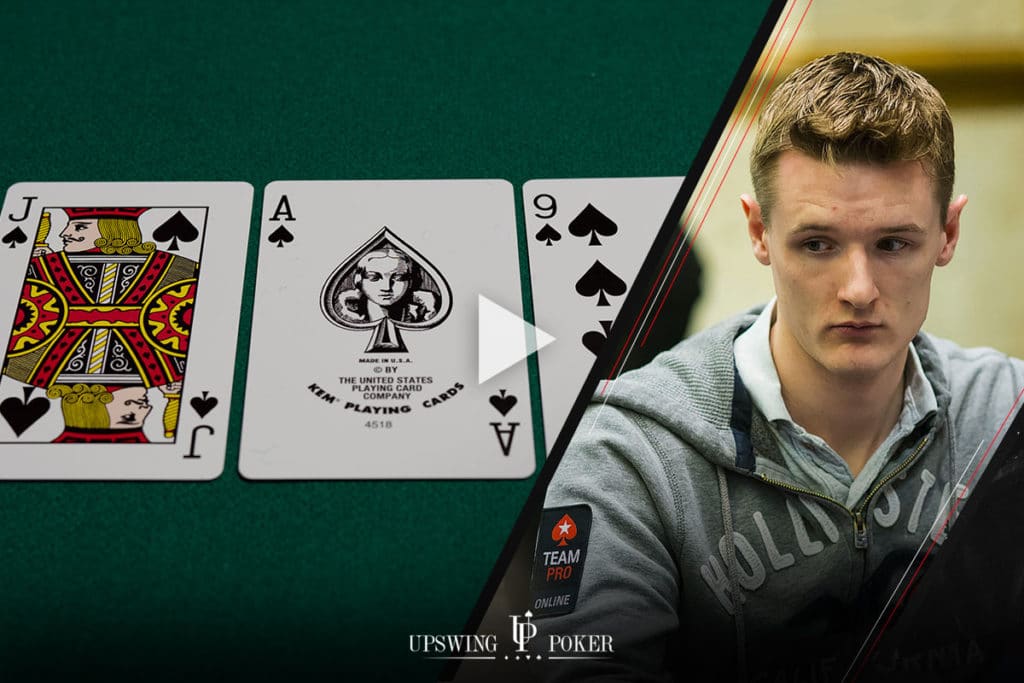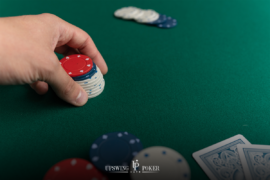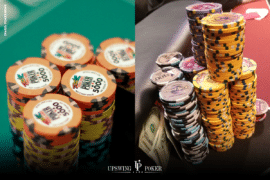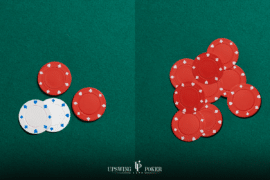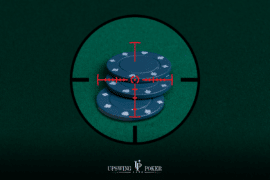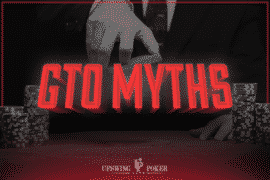
3 Ways You Might Be Bleeding Money in Cash Games
There are so many ways to lose money in poker, but there are only a few ways to win.
This is why when you are starting off in poker, and throughout your journey to the top, you shouldn’t focus on making “sick” and creative plays.
You should instead focus on not doing something dumb that will cost you a lot of money. Put simply, making dumb mistakes frequently or in big pots will absolutely decimate your win-rate.
With this idea in mind, I am going to share with you 3 ways in which you might be bleeding money in cash games.
1. C-betting Too Often When Out of Position on the Flop
C-betting too frequently when out of position is a very common mistake made by players at all stake levels.
(I’m referring specifically to the hands in which you open-raise from the cutoff or earlier and a player who has position on you calls, like when you raise UTG and the player on the button calls.)
Here’s why c-betting often in these spots is sub-optimal: even though your range has more combinations of strong hands (such as an overpair or better), those hands represent a less significant portion of your overall range compared to the strong hands in a cold-callers range.
For example, suppose you raise from middle position, the cutoff calls, and the flop is 8♠ 5♦ 3♣.
You have a slight advantage in terms of super-strong hands on this flop. You can have 99-AA and all the sets, whereas the cutoff usually only has the top two sets and maybe a few overpairs (depending on how he plays them preflop).
But you also have a huge disadvantage in terms of what portion of your range has missed this flop. You can have all combinations of AK, AQ, AJ, AT, KQ, KJ, QJ (both the suited and offsuit), plus a bunch of other suited hands that whiffed the flop, and these hands make up a big portion of your range.
By comparison, the cutoff’s range is extremely narrow overall since it lacks all those offsuit hands that you have in your range. This makes his overall equity much higher.
This range matchup alone is not enough to make you want to check a lot, but if you couple it with a high stack-to-pot ratio, it means that if you play a high-frequency c-bet strategy, you are susceptible to being exploited by a very aggressive raising strategy.
When the stack-to-pot ratio is lower (like in tournaments), you can justify c-betting a bit more often when out of position.
The Exception: When You Should C-Bet Frequently Out of Position
It’s important to note here that a high-frequency c-bet strategy is optimal against an opponent who has a wide cold-calling range in position.
When your opponent calls with a wide range, you both have similar distributions of strong hands, but you still have an edge in the overpair category since your opponents likely would have 3-bet with big pairs preflop.
This exception typically happens when you are up against a recreational player who calls a lot of preflop raises.
2. Check-Raising Infrequently from the Big Blind
The second way you might be losing money in cash games is by not being aggressive enough against c-bets when you are playing from the big blind.
By not putting enough pressure on your opponents with check-raises, you make their bets much more profitable than they should be. This can get even worse when you are up against a player who c-bets recklessly with too many weak hands. Those weak hands still have equity and, if you don’t check-raise, you allow your opponent to realize that equity (see: equity realization).
You need to fight like hell for every single pot, regardless if you are in position or not.
Which Hands Should You Check-Raise?
You should heavily lean towards check-raising with your strong hands such as two-pair or better, and sometimes even top pair top kicker when the board is lower (e.g. A9 on a 9-high flop).
But you shouldn’t stop here: after picking out the hands you want to raise for value, you should then pick your bluffs. The best bluffs should be hands that have decent equity and a chance to improve to a straight or a flush. These are generally gutshot straight draws, open-ended straight draws, and flush draws.
You shouldn’t check-raise with all draws, though. Instead, find a way to randomize them. For example, you can check-raise straight draws with a backdoor flush draw, while check-calling the ones without a backdoor flush draw.
For flush draws, you can choose either the smaller ones or the stronger ones as there are arguments for going either way. Just make sure you aren’t check-raising with all of your flush draws.
The benefit of check-raising the smaller flush draws is that they will usually be forced to fold to a second barrel and thus not realize their equity. The benefit of check-raising the high ones is that you can comfortably shove all-in on the river after you’ve hit, allowing you to win the maximum if your opponent has a weaker flush, which you may not be able to do if you just check-call the flop and keep the pot small.
Want to learn more about check-raising? Read our general guide to check-raising or take our check-raise strategy quiz.
3. Not defending your ranges in the infrequent spots
While it’s natural to focus your attention on the biggest pots that you play, the smaller pots are where a player shows his real strength. This is where a lot of your win-rate can be won or lost if not played properly.
Why is that, you may ask?
It’s because these spots occur often and a small leak can lead to a huge loss over the long run.
Here are a few examples of infrequent spots:
- Bet flop, check turn, bet river.
- Check down to river.
- Check flop, bet turn and river.
At its core, an imbalance in these infrequent spots stems from a misunderstanding of a hand’s category. If you frequently miscategorize your hand, your frequencies will become erratic and thus you will bleed money to more well-balanced players.
To ensure you don’t bleed money, make sure to include medium-strength hands in all your ranges. These medium-strength hands will not only protect your weak hands that can win at showdown sometimes (like A-high), but will also allow you to credibly bluff with your very weak hands (like 7-high) after your opponent checks.
It’s the same principle that is observed in chess where the player that can get his pieces to work more synergistically is usually the one that wins the game.
That’s All for Today!
If you have any questions or feedback make sure to leave them in the comment section below and I’d be glad to answer.
Till’ next time, good luck, grinders!
New Course Coming to Upswing Poker on January 13th
Advanced Cash Game Strategy with Kanu7
One of the biggest cash game winners of all time has been working on an extensive course to help you dominate cash games!
The course will contain a whopping 36 hours of content, along with preflop ranges for every common spot at three different stack depths (50bb, 100bb, and 200bb).
Kanu7 is also creating a free five-part video series in the run up to the course launch date. The first four videos are already available — click below to watch the first one!
